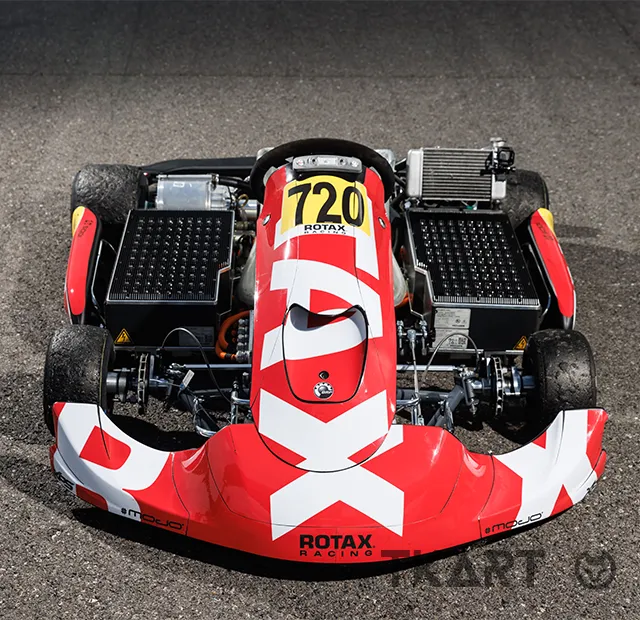Frequent Searches
Frequent Searches

 Exclusive Content
Exclusive Content

E20, THE ROTAX JUNIOR/SENIOR 40 CV FULL ELECTRIC KART
The Austrian company, known as the largest manufacturer of combustion engines on the karting scene, is expanding its horizons by creating a fully electric product. The Rotax E20 E-Kart was launched in 2019 and has since been developed and used exclusively on race tracks by kart drivers taking part in the Rotax "E-Racing" events in an Arrive & Drive concept (this vehicle is not for sale, but can only be used in the aforementioned competitions or by booking a test drive directly on the Rotax website). Thanks to Siegfried Wilhelmstaetter, one of the engineers involved in the project, we discovered the characteristics of this kart and its concept
E20 is not only the name of the engine designed and manufactured by BRP-Rotax, but also that of the class that is part of the Rotax MAX Challenge (RMC) Euro Trophy and some special E-Kart championships as well as a fixed category at the RMC Grand Finals since 2021. The RMC is the one-make championship that is run exclusively with the engines of the Austrian manufacturer. To participate in the RMC races in the E20 class it is necessary to be in possession of a driving license: the International E or F for the Senior class (dedicated to drivers over the age of 14), or the International G for the Junior class (for kart drivers between 12 and 16 years of age) and International E for E20 Masters for drivers 32+. Once these bureaucratic steps have been carried out and the necessary documentation has been obtained, the next steps are quite simple: the E20 class only provides for the "Arrive and Drive" formula. What is it about? In practice, the drivers pay the registration fee for the event (which costs around 2750 Euros + race tyres for RMCET Events), show up on the track with a mechanic / companion and compete by "renting" everything they need to complete the weekend, including the complete kart, access to the charging point for batteries and the support of the Rotax staff who supervise and give advice. The formula is similar to that used in the Rental Kart centres, but the vehicles used are real Racing Karts, capable of performance comparable to those of internal combustion engines. The chassis used is the DD2 version of the Sodi Sigma, flanked and powered by the Rotax E20 electric engine, all approved by the German company Dekra, which is responsible for carrying out crash tests, fire tests, isolation tests and all the checks that allow the safe use of these karts. In 2024, the Rotax E20 got approval by the CIK-FIA, which makes it the first ever E-Kart to be awarded this level of certification in karting. This also means that the Rotax E20 Championship at the RMCET becomes the first CIK-FIA approved international Series for electrically powered karts worldwide. To learn more about the technical aspects, we recommend that you continue reading this article but, to better know how the weekend evolves and the sensations felt driving these vehicles, we recommend (starting from 19 August 2024) that you read the article "Racing in the Rotax Max Euro Challenge in the E20 class... after 3 years of stoppage!" in the "Once in a lifetime" section of TKART Magazine, in which TKART director Yanek Sterzel talks about his first-hand experience in Round 3 of the Rotax MAX Challenge Euro Trophy, held from 5 to 7 July 2024 at the Franciacorta Racing Track.
Editor's note
BRP-Rotax is not the only company that has expanded its engine production into the electric world. At TKART, we have been working on the subject of "green" engines on several occasions. To find out more, we recommend you read on: